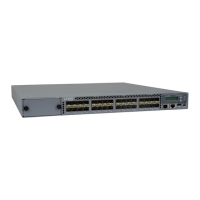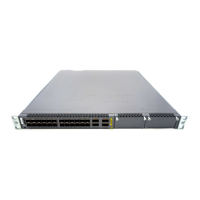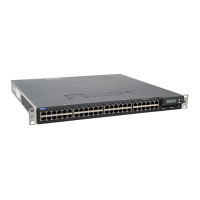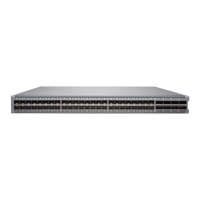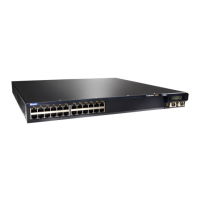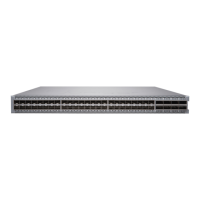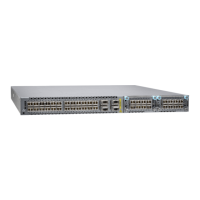7. Remove the rubber safety cap from the transceiver and the end of the cable, and insert the cable into
the transceiver.
LASER WARNING: Do not look directly into a ber-opc transceiver or into the ends
of ber-opc cables. Fiber-opc transceivers and ber-opc cable connected to a
transceiver emit laser light that can damage your eyes.
CAUTION: Do not leave a ber-opc transceiver uncovered except when inserng or
removing cable. The safety cap keeps the port clean and protects your eyes from
accidental exposure to laser light.
8. If there is a cable management system, arrange the cable in the cable management system to prevent
the cable from dislodging or developing stress points. Secure the cable so that it does not support its
own weight as it hangs toward the oor. Place excess cable out of the way in a neatly coiled loop in
the cable management system. Placing fasteners on the loop helps to maintain its shape.
CAUTION: Do not let ber-opc cable hang free from the connector. Do not allow
fastened loops of cable to dangle, which stresses the cable at the fastening point.
CAUTION: Avoid bending ber-opc cable beyond its minimum bend radius. An arc
smaller than a few inches in diameter can damage the cable and cause problems that
are dicult to diagnose.
Figure 106: Install a Transceiver
195
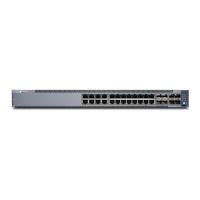
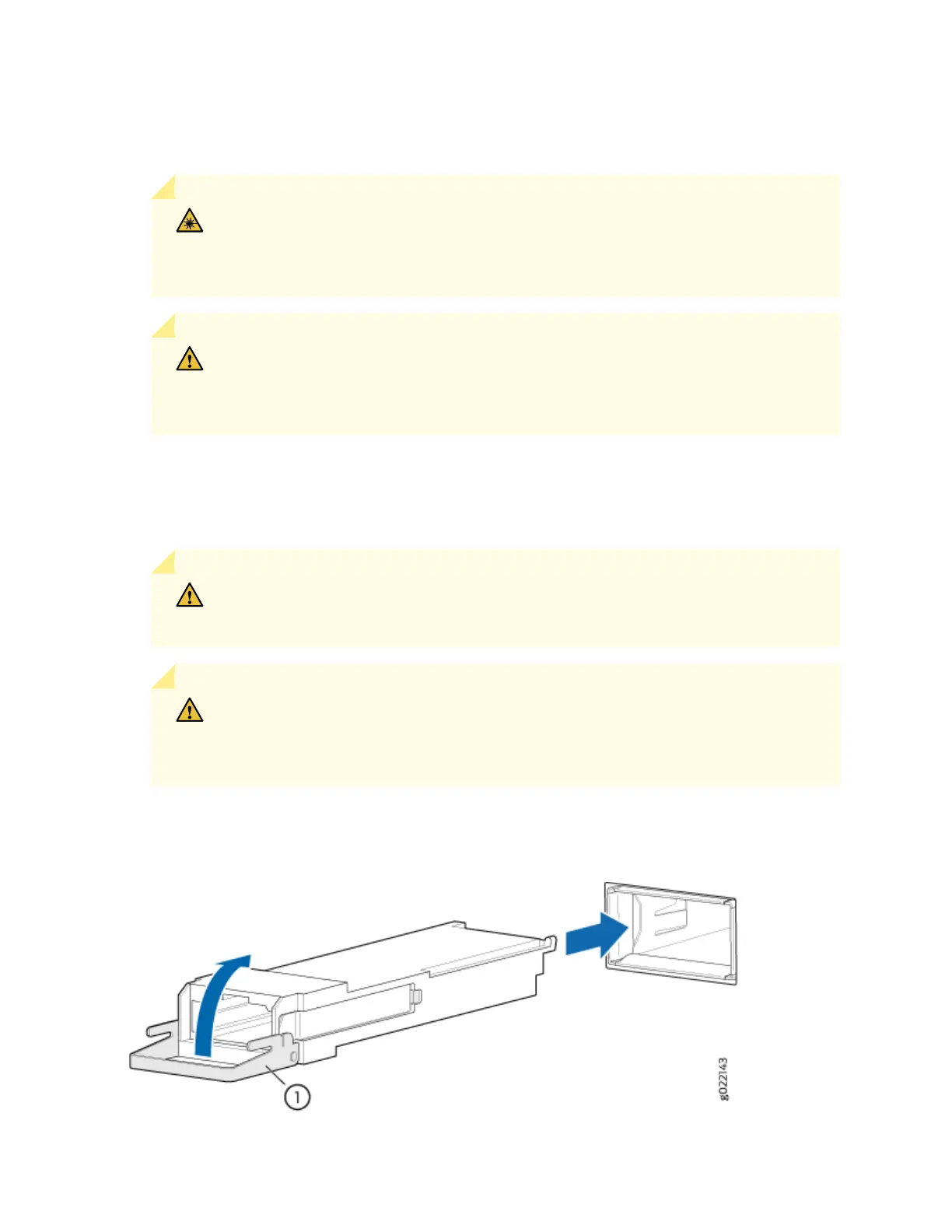